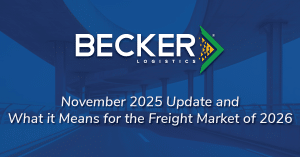Being successful in logistics is no longer just about moving goods, it’s about moving smart. And that’s where shipping and logistics analytics come into play.
From predicting demand spikes to reducing carbon footprints, the role of analytics in the supply chain is transformative. Companies that embrace data-driven decision-making are not just shaving costs, they’re gaining a strategic advantage in service, speed, and sustainability.
So, what exactly is the impact of shipping and logistics analytics? Let’s dive in.
Why Shipping and Logistics Analytics Matters
Logistics operations generate a massive amount of data, from GPS trackers to transportation management systems (TMS). Shipping and logistics analytics refer to the process of capturing, analyzing, and applying this data to improve decision-making across the supply chain.
Without analytics, logistics becomes reactive. Delays surprise you. Inventory problems escalate. Costs creep up. But with a smart data strategy? You get precision. You get control. And you get better results.
How Analytics Impacts the Shipping and Logistics Industry
1. Operational Efficiency and Cost Reduction
One of the most immediate impacts of shipping and logistics analytics is on operational efficiency.
- Route Optimization: Advanced analytics helps optimize delivery routes based on real-time traffic, weather, and delivery constraints. This cuts fuel consumption, improves delivery speed, and reduces overtime costs.
- Warehouse Optimization: By analyzing SKU movement, order frequency, and pick paths, analytics tools can streamline warehouse layouts and minimize wasted motion. That means faster fulfillment and fewer errors.
- Fleet Management: Telematics and predictive maintenance analytics help monitor vehicle health, preventing costly breakdowns and extending asset life.
The bottom line? Analytics helps logistics professionals do more with less and do it faster.
2. Forecasting and Inventory Management
Demand forecasting powered by machine learning can increase forecasting accuracy by up to 50%. That’s a game-changer when managing inventory.
Shipping and logistics analytics enables:
- Smarter Inventory Planning: Predict future demand, identify seasonality, and align procurement with actual needs.
- Reduced Stockouts and Overstocks: Analytics can help balance inventory levels, ensuring you’re not tying up capital in excess stock or disappointing customers with backorders.
- Optimized Reorder Points: Dynamically adjust reorder thresholds based on sales velocity, lead times, and supplier performance.
This isn’t just about having enough product, it’s about having the right product in the right place at the right time.
3. Enhanced Visibility and Risk Management
Visibility is pretty important across every industry in the supply chain circles, and for good reason.
With shipping and logistics analytics, businesses gain:
- Real-Time Tracking: Know where every shipment is, what condition it’s in, and when it’s arriving.
- Proactive Disruption Management: Spot potential issues (like weather disruptions or port congestion) before they escalate into problems.
- Risk Modeling: Identify weak links in the supply chain and build contingency plans based on actual risk profiles.
Whether it’s a delayed shipment or an international compliance risk, analytics helps you respond before your customers even notice a problem.

4. Sustainability and Green Logistics
Analytics isn’t just good for business, it’s good for the planet and ensuring a minimal carbon footprint.
By analyzing fuel usage, load efficiency, and emissions data, logistics teams can:
- Reduce Carbon Emissions: Optimize routes and consolidate loads to decrease trips and fuel usage.
- Promote Eco-Friendly Practices: Track sustainability metrics and support ESG reporting efforts.
- Make Informed Mode Choices: Evaluate when it’s greener (and cheaper) to ship by rail vs. truck or air.
In an era where customers and investors are demanding sustainable practices, shipping and logistics analytics provides the insights to back your green initiatives with real action.
5. Improved Customer Experience
Let’s be honest: in logistics, you’re often only as good as your last delivery.
Analytics helps you deliver a better experience by:
- Providing Accurate ETAs: Predictive modeling means customers know when to expect their shipments, no vague windows or broken promises.
- Reducing Exceptions: Fewer lost packages, delays, and errors mean happier clients and fewer support tickets.
- Enabling Self-Service: Analytics-driven portals allow customers to track shipments, view history, and plan ahead.
When customers can rely on you to deliver not just packages, but predictability, you’re building brand trust and loyalty.
Tools and Best Practices for Success
To fully unlock the power of shipping and logistics analytics, you need the right tools, systems, and mindset. It starts with having a solid digital foundation. A modern Transportation Management System (TMS) and Warehouse Management System (WMS) work together as the operational backbone, capturing data across shipments, inventory, and performance.
Next, integrating technologies like IoT, GPS, RFID, and telematics brings real-time visibility into your supply chain. These tools generate data points that fuel smarter decisions, whether they’re tracking a shipment, predicting maintenance needs, or identifying bottlenecks.
But technology alone isn’t enough. One of the most important steps is ensuring your data is clean, consistent, and connected. Too often, logistics operations are held back by siloed systems that don’t communicate well. By harmonizing data across platforms, companies can unlock a clearer picture of what’s happening and why.
As your analytics strategy matures, you’ll want to move beyond basic reporting. This means incorporating predictive analytics to anticipate future trends, and prescriptive analytics to recommend the best actions in response. It’s about shifting from reactive fixes to proactive planning.
Finally, don’t underestimate the value of strategic partnerships. Whether you’re working with a 3PL that offers built-in analytics capabilities or bringing in a logistics technology expert to support implementation, collaboration can accelerate your path to value. Analytics doesn’t have to be built from scratch, you just need to be smart about where to begin and who can help get you there.
Challenges You May Face
Analytics doesn’t come without hurdles.
- Legacy Systems: Many logistics firms still rely on outdated software. Modernizing can be complex but necessary.
- Data Silos: Disconnected systems limit visibility. Centralizing data is a top priority.
- Skill Gaps: Advanced analytics requires talent. Upskill your team or bring in external expertise.
- Upfront Costs: There is an investment, but the ROI (in efficiency, savings, and customer retention) can be massive.
The key is to start small. Find a high-impact area (like route optimization or demand planning), run a pilot, and scale up from there.
The Future of Shipping and Logistics Analytics
The future of shipping and logistics analytics is driven by real-time data and intelligent automation. As AI and machine learning advance, supply chains will become more predictive via automatically adjusting routes, inventory, and resources based on shifting conditions.
Forecasting will grow more dynamic, pulling from real-time behavior and trends to respond faster to demand changes. At the same time, sustainability will become more data-driven, with analytics providing clear insights and actionable strategies to reduce emissions and improve environmental impact.
Companies that embrace these tools will gain speed, resilience, and a competitive edge in an increasingly complex logistics landscape.
Final Thoughts
Shipping and logistics analytics has moved from a “nice-to-have” to a strategic necessity. It empowers businesses to optimize performance, control costs, delight customers, and drive sustainable growth.
The question isn’t if you should use analytics. It’s how fast can you implement it and who will you trust to help you lead that transformation?
If you’re ready to take the next step, start by evaluating where your biggest blind spots are. Are your routes optimized? Is your inventory strategy data-driven? Are your customers getting the experience they expect?
Answer those questions and then let the data do the driving.




